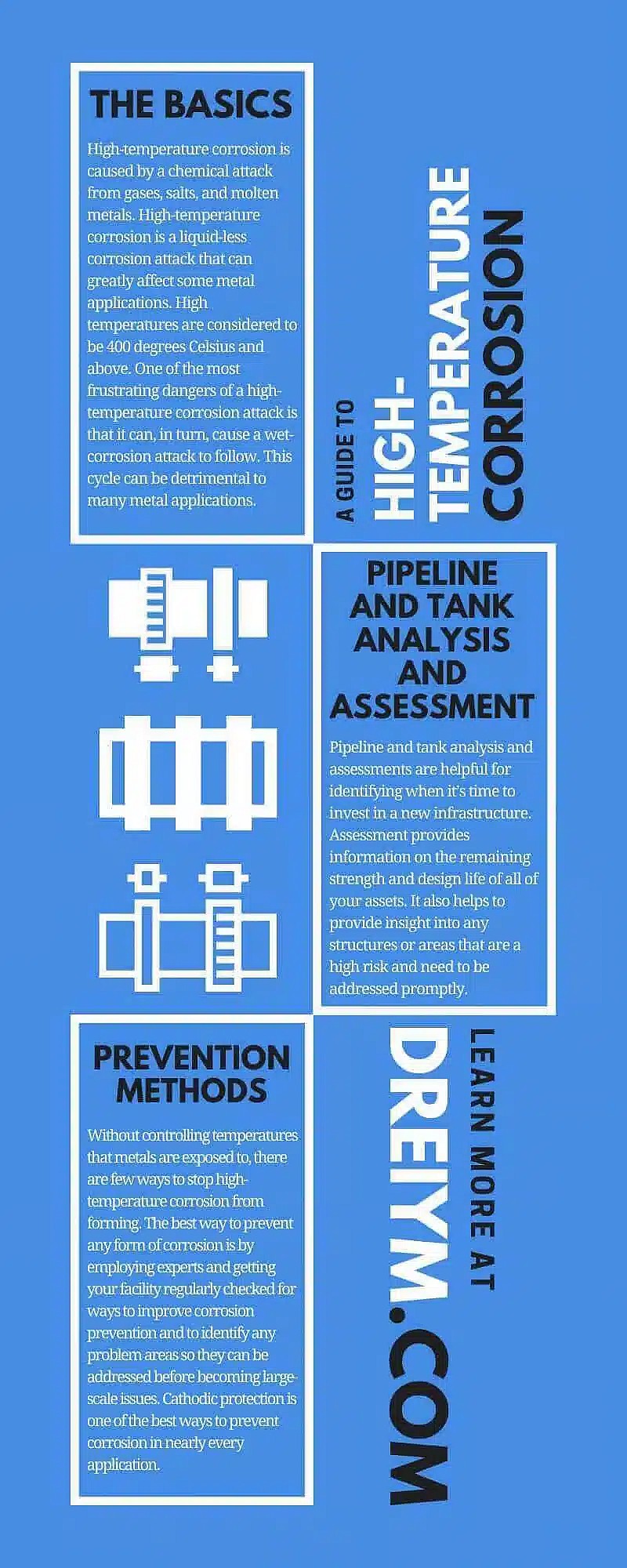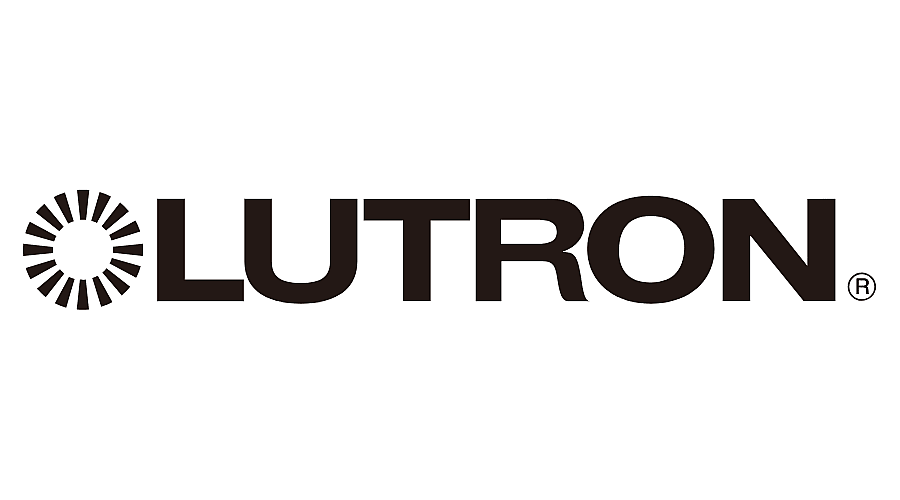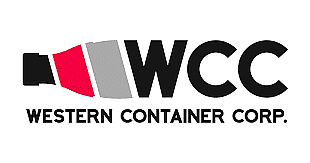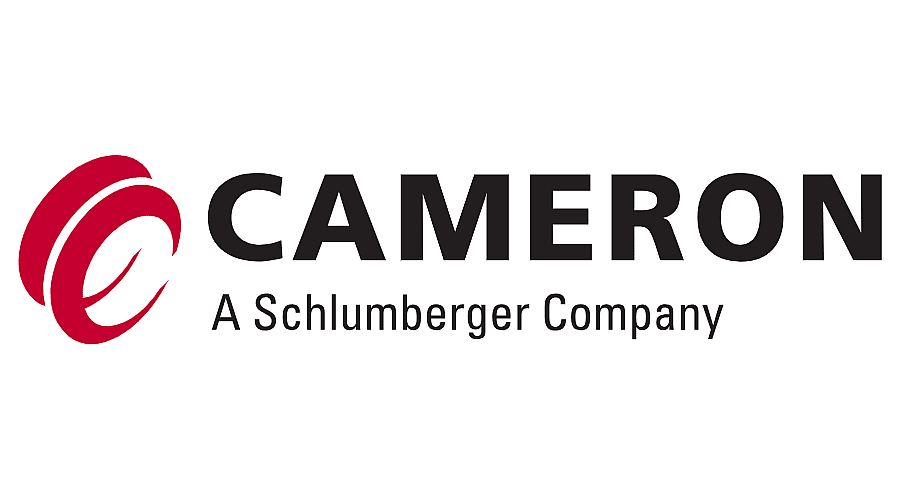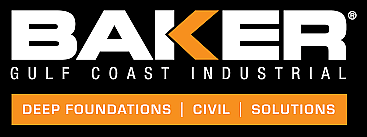A Guide To High-Temperature Corrosion
There are many different types of corrosion that facilities and other areas that work with metal applications should be aware of. Most of these corrosion types require the presence of a liquid. Unknown to many, liquid isn’t a requirement for corrosion to form. The most common form of corrosion is called galvanic corrosion. Galvanic corrosion is formed by the prolonged exposure to moisture. This can be any form of liquid including water, humid air, corrosive materials, and more. There are also forms of corrosion that attack metals even in the absence of liquids. This type of corrosion is called high-temperature corrosion. It comes in many forms and has many causes. Explore this guide to high-temperature corrosion to learn more about how it forms, how to protect your structures, and more.
High-Temperature Corrosion: The Basics
High-temperature corrosion is caused by a chemical attack from gases, salts, and molten metals. High-temperature corrosion is a liquid-less corrosion attack that can greatly affect some metal applications. High temperatures are considered to be 400 degrees Celsius and above.
One of the most frustrating dangers of a high-temperature corrosion attack is that it can, in turn, cause a wet-corrosion attack to follow. This cycle can be detrimental to many metal applications. Below are a few examples of common types of high-temperature corrosions.
Oxidation
Oxidation is the reaction that happens between oxygen and metal. When an oxide is continuously formed and succeeds in separating an alloy from the atmosphere, it can be a positive thing. When it fails to separate the alloy and the atmosphere it can create corrosion.
Carburization
Carburization is what occurs when carbon bonds with chromium. This happens often at grain boundaries, causing corrosion to make metal surfaces more brittle. It also reduces metal’s resistance to oxidation, paving the way for further corrosion.
Nitridation
Metals that are exposed to ammonia or nitrogen-filled environments at high temperatures are at increased risk of nitridation. It caused a hard, brittle metal to form. This corrosion can be prevented by the addition of nickel as an alloyed element in the metal.
Molten Salt
Molten salts are often used in heat treatment plants, nuclear energy plants, and sometimes in concentrated solar power plants. When a metal comes in contact with molten salt at high temperatures, it can quickly create corrosion. Molten salts remove the oxide scale from metal surfaces causing the metal to thin, pit, or experience an intergranular attack.
Sulfidation
Sulfidation is caused by the presence of sulfur. Sulfur is often present in impure crude oil, putting pipelines at increased risk. Sulfidation causes thinning of the pipeline walls and can even lead to breaches in the pipeline, causing spills, leaks, and further ruptures.
Molten Metal
When liquid metals are used for heat transferring, the contaminant material can come into contact with molten metal and can cause corrosion. The only real way to prevent this corrosion is an in-depth knowledge of how molten metals react with certain materials in the containment system.
Halogen
Halogen corrosion is when metals react with halogen gas at high temperatures. It can cause volatile metal halides to form on the metal surface. This can create serious problems for many metals, although stainless steel is especially susceptible to this form of corrosion.
High-Temperature Corrosion Prevention Methods
Without controlling temperatures that metals are exposed to, there are few ways to stop high-temperature corrosion from forming. Each type of high-temperature corrosion has different causes in addition to the temperatures, making it difficult to find a blanket solution.
Know what metals can and cannot withstand high heats and adjust plans accordingly. For example, knowing how susceptible stainless steel is to halogen corrosion, it’s best to eliminate the use of any stainless steel in or around areas where it could potentially be exposed to halogen gas.
The best way to prevent any form of corrosion is by employing experts and getting your facility regularly checked for ways to improve corrosion prevention and to identify any problem areas so they can be addressed before becoming large-scale issues. Below are a few services to invest in.
Cathodic Protection
Cathodic protection is one of the best ways to prevent corrosion in nearly every application. There are a few services for cathodic protection you can choose from.
System Design
Cathodic protection system design provides a full system design, construction of the system oversight, and commissioned tests that adhere to the National Association of Corrosion Engineers (NACE) best practices.
Startup and Commissioning
Cathodic protection startup and commissioning allows you to focus on business worry-free as NACE certified engineers perform field construction oversights. They ensure the system was designed and built to industry standards and identify any overlooked systems.
Interference Analysis
A cathodic protection interference analysis is when a variety of field evaluations are done to determine the health and wellness of a current system.
Surveys
Cathodic protection surveys are continuous surveys of existing surveys conducted to work toward the best corrosion prevention methods possible. Experienced corrosion engineers help identify the steps needed to protect your large metal applications.
Pipeline and Tank Analysis and Assessment
Pipeline and tank analysis and assessments are helpful for identifying when it’s time to invest in a new infrastructure. Assessment provides information on the remaining strength and design life of all of your assets. It also helps to provide insight into any structures or areas that are a high risk and need to be addressed promptly.
Contact Dreiym Engineering today for any of the above services, and more. We employ expert corrosion engineering consultants who aim to provide you with the best service possible to keep your applications and structures safe from the damages of corrosion. Whether your issues are caused by the potential formation of high-temperature corrosion, galvanic corrosion, or another form of corrosion, we can help prevent further corrosion and make recommendations for the affected structure.
Keep this guide to high-temperature corrosion in mind when designing your areas and applications. Be mindful of the temperatures your metals are exposed to as well as other materials that can form a chemical attack corrosion or high-temperature corrosion. For more information and proper prevention methods, contact Dreiym Engineering today.
